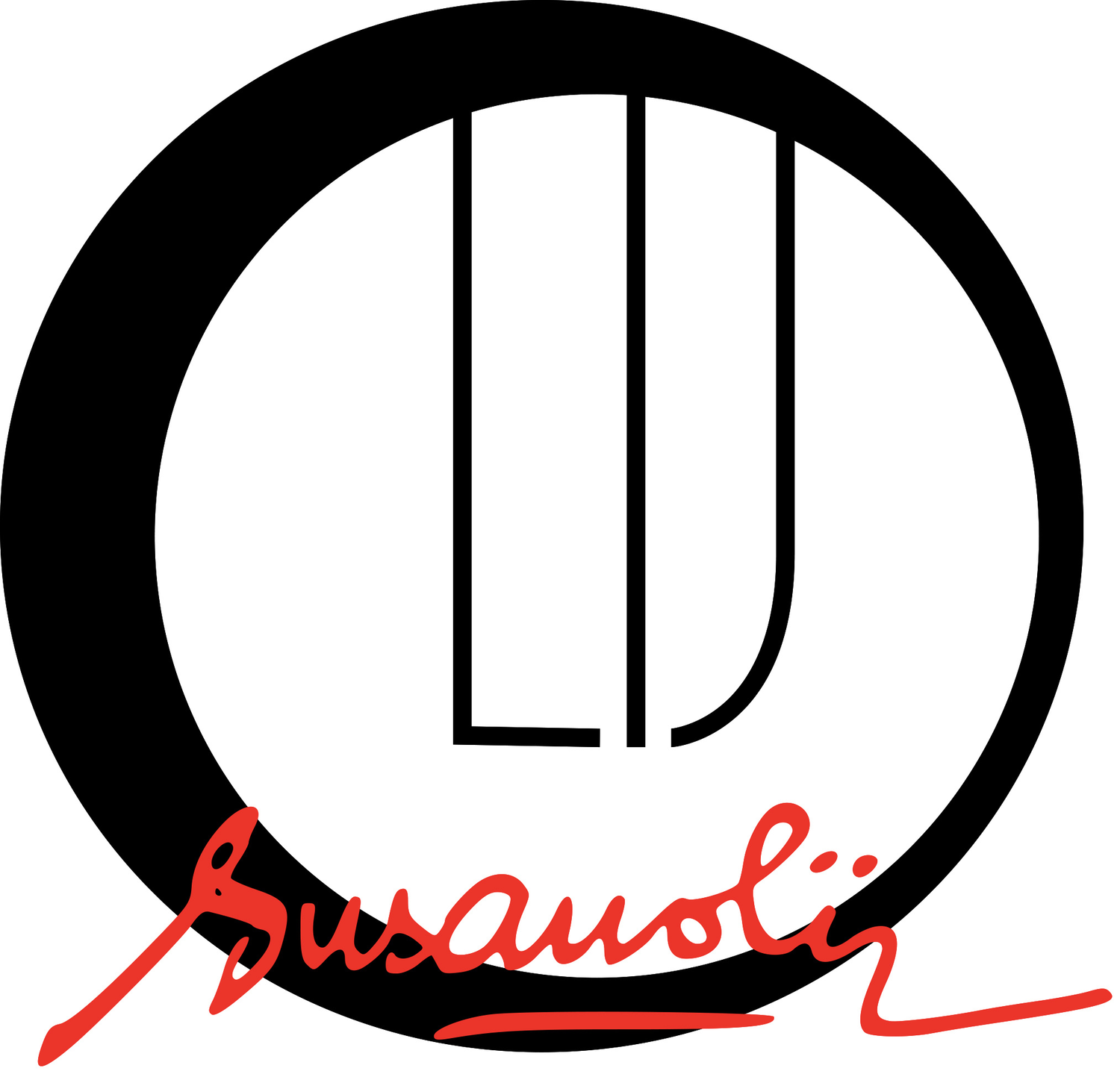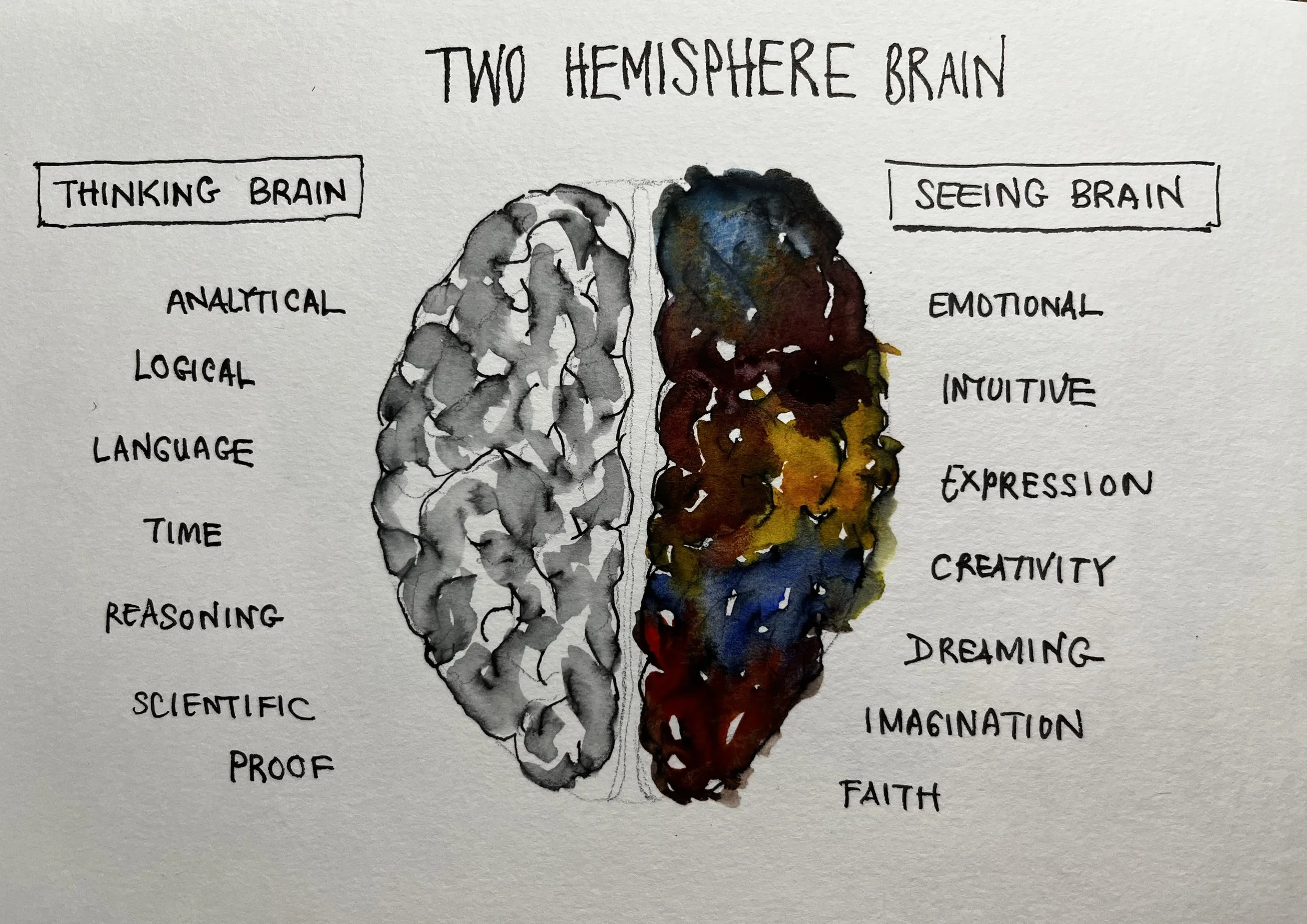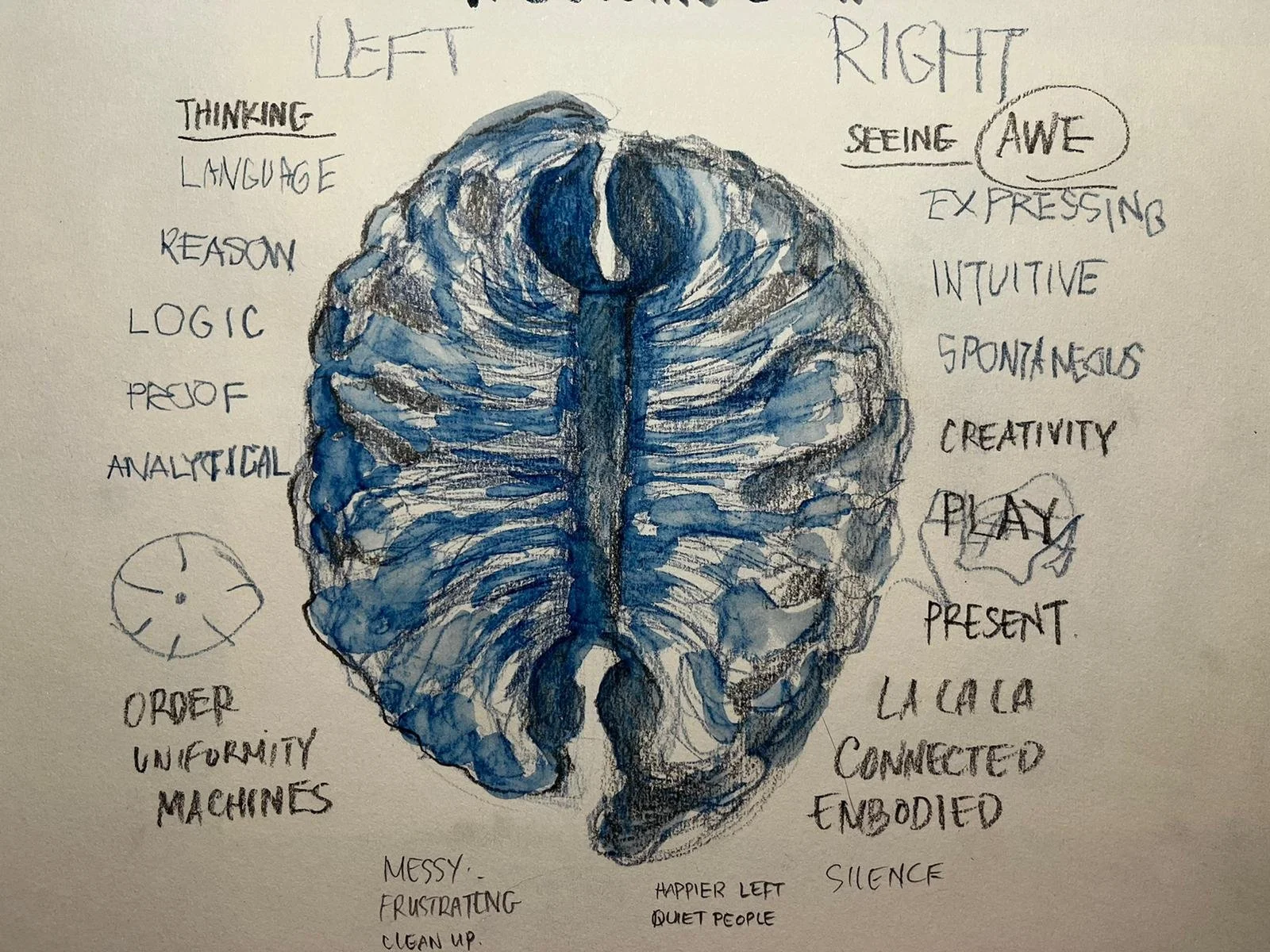Drawing with both Hands
Ask yourself these 5 questions and be honest:
Am I stuck in a rut with my drawing? I cannot seem to improve beyond what I am doing.
Am I painfully trying to make precise drawings but never feel satisfied with the result?
Do I fear making mistakes, to the degree I keep doing things the safe way and wished I could do it differently, but don’t know how.
Do I draw very tight, and focus on details too early, and despite my effort to really let go and be loose, I am unable to do it with ease.
Am I my own harsh critic, and I demand perfection?
If you answer YES to more than one of these questions, and you might like to try joining my new workshop!
Details below.
I have been drawing using both hands, on and off, interchangeably for about a few years. I am starting to use my left (non-dominant) hand to draw when my right hand complained and wanted a long rest. I might have overused it! Contrary to what the image above suggests, I rarely use both hands to draw simultaneously. But I do use it interchangeable now, more than ever, and now I thought I should share what I’ve learned from the process in a new workshop titled ‘Drawing Using Both Hands’.
Back in 2010, while teaching fashion illustration in the School of Fashion in LaSalle College of the Arts, I started to dabble into teaching short courses, and I have always loved Drawing on the Right Side of the Brain book by Betty Edwards, so I decided the best way to apply the multiple techniques in the book to my own practice, is to develop a course on it. Seven years later, I was teaching Drawing Using the Right Brain course to hundreds of students, I developed the curriculum loosely using Betty Edwards’s book as well as developmental play techniques I learned along the way. I was fascinated by how much we as human beings can do, but not always consciously. I was curious, I was interested, and the well of wisdom opens more and more as I continuously learn about how I am using my brain to draw. Fast forward to the pandemic era, this is still my favorite topic.
Drawing Using the Right Side of the Brain course stopped when I went on my 1.5 years travel sabbatical in 2018, but I came back with four travel sketchbook (a bit about that here) and during the lockdown, I started to join Urban Sketchers Singapore, and went to draw solo on locations so much that it kick started my sketchbook practice going. Now what I focus my art practice into watercolours, the short course Travel Sketching was born. I’ve always used the Right brain techniques I learned and taught and I was always surprise how the methods really ease the struggle of unrealistic expectation, and I can measure my drawing progress with more ease, less judgements and self criticism.
While researching about the right and left hemisphere usage in creativity since Betty Edward’s book was released in the 70’s, I realise the debate about the functions of the right and left brain continues, and like most science, inconclusive. The one explanation by psychotherapist Iain McGilchrist seem to suggest very similar theories as Betty Edward’s two hemisphere functions, but more nuanced, and some adjustments on how we use both hemisphere brain to be creative, as well as to be analytical, and both sides has distinctly different mechanics. What’s interesting is, McGilchrist version visualised in my sketch below stresses that indeed the right and the left have different focus and strength that in sync with the two brain theory in the drawing below. The usage of language is just less definitive and that both sides are used when we do things, but depending on the activity, used in different ways, but both are used simultaneously.
The way I simplify this theory in the context of learning to draw is to make aware that the side of the brain that’s more open and sees the broad strokes, the one tuned into the environment for survival and where presence and attention tend to be the right side. Which I refer to as the ‘seeing brain’. The more narrow focused, concrete and detailed side of the brain, the side that McGilchrist posits the world is created from and I refer to the left side as the ‘thinking brain’.
It is fascinating when McGilchrist uses many different metaphors to explain the difference between the two hemisphere, but this one stuck, the left side as the map, and the right side is the territory, therefor the left side sees flat and permanent and the right sees a living, breathing, ever changing three dimensional space.
For years I was trying to explain to students the technique of squinting your eyes so that you can flatten your binocular vision, and therefore making drawing anything 3D on paper much easier. I realise that flattened vision and maps aren’t the same, but in drawing, we are trying to simplify what is visually complex. The simplifying technique in drawing and painting requires a shift in seeing, and believing what we see, instead of thinking about what we’re seeing. This tends to be very difficult for students to grasp. What they see is constantly interrupted by what they think they see, and its difficult to tell what is there instead of what we believe is there. This is the key in all observational drawing, if you can see the subject/objects in a flattened way, you can measure the relationships of all the shapes to each other much easier, and your drawing will look more ‘realistic’.
I remember wrestling with this for a long time myself, when I was doing a lot of life drawing, and most of my drawings then just felt off, despite my thinking brain analysis which cannot see where it was off. It took years before I finally could wrap the idea around flattening the binocular vision, like a lot of people, I was a left brain dominant.
It doesn’t matter how much of either side of your brain is being used when drawing, but it might interest you to notice when your drawings improve, it is because likely, you have started to draw what you’re seeing, and less believing what your thinking brain is telling you.
So back to this workshop, I am introducing, the concept of drawing with both hands, as a new concept, there are many ambidextrous artists out there, and there are plenty of people who are already using their non-dominant hands to do certain task and interchangeably unaware of the actions.
The workshop I am introducing is specifically targeted for those who are in a rut, stuck in a very comfortable but uninspiring zone of their drawing practice, or someone who’s a perfectionist, and pride themselves to be an accurate and precise artists, yet unable to get the precision they want in their work. And finally this lesson is also for the artists who’s afraid of making mistakes.
The process of using the non-dominant hand is for all level of artists and it requires some openness and courage to step out of their comfort zones.
Sometimes we are in a rut creatively, because we failed to see that we’re also in a rut in other parts of our work and life. We are all human and we ebb and flow with the degrees of bold versus timid vibes. This workshop can be a reset button, a refresher, a breath of fresh air, or the likes for those who’s just not been able to get new energy lately. We cannot blame our rut to residual Pandemic hangover forever. This workshop has been transformational and empowering to the few people who’s done it.
This workshop has been offered twice in October and November. Now I am offering it for free as part of my annual community workshop.
A FREE COMMUNITY WORKSHOP - ONLINE will be held on Zoom.
13 December 2022 - 8 PM SGT
To join this workshop via eventbrite. Click here
———————————————————————————————————
Iain McGilchrist ‘The Master and It’s Emissary’.
Betty Edwards ‘Drawing using the Right Side of the Brain’




